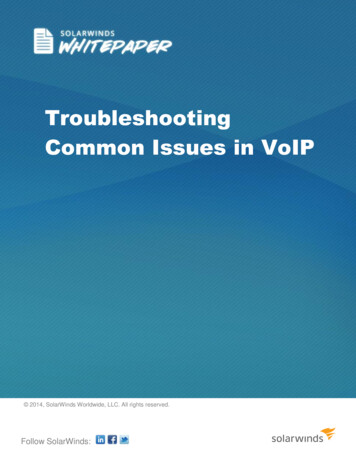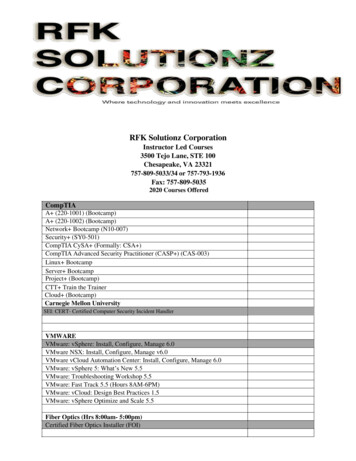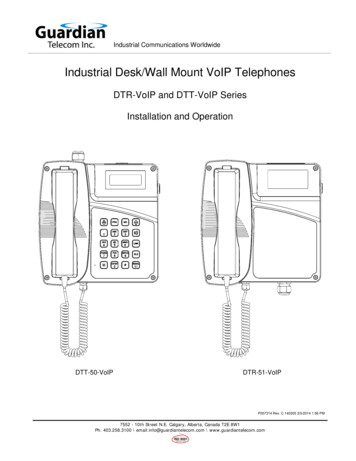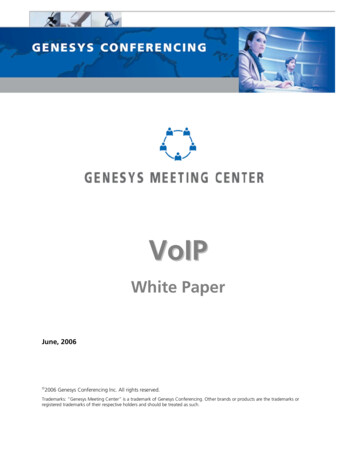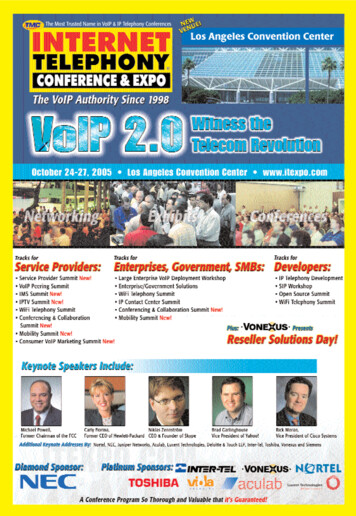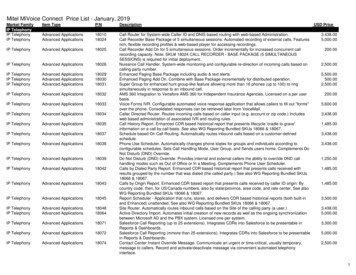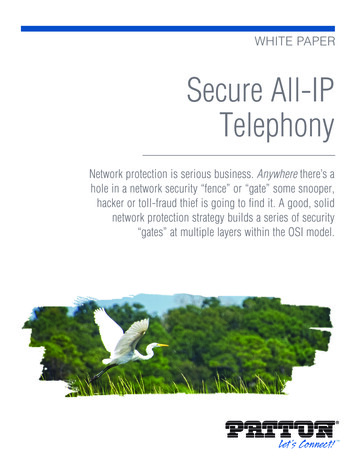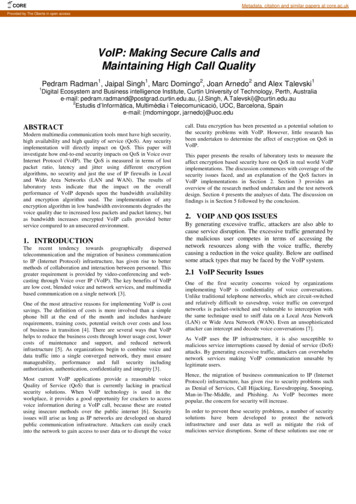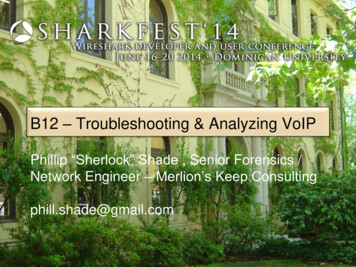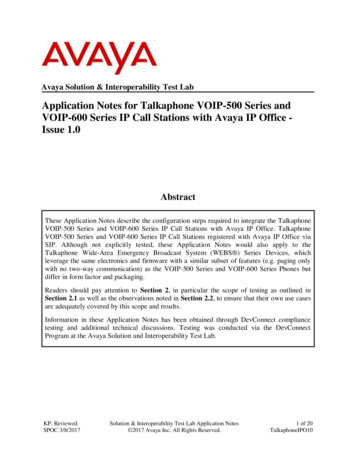
Transcription
Telephony and VoIPFundamentalsSteven TaylorPresident, Distributed Networking Associates, Inc.Publisher/Editor, Webtorialstaylor@webtorials.comLarry HettickVice President, Wireline SolutionsCurrent Analysislarry@larryhettick.comCopyright & NoticesProfessional Opinions - All information presented and opinions expressed by DistributedNetworking and/or Larry Hettick are the current opinions of Distributed Networking and/orLarry Hettick based on professional judgment and best available information at the time ofpresentation. Consequently, the information is subject to change, and no liability for advicepresented is assumed. Ultimate responsibility for choice of appropriate solutions remainswith the Customer.Copyright, 2004 - Distributed Networking Associates and/or Larry Hettick. All portions ofthis presentation are copyrighted by Distributed Networking Associates and/or Larry Hettickand/or the organization credited as the source of information. All forms of reproductionand/or recording, including photocopying, tape recording, and video taping are strictlyprohibited without the express prior written permission of Distributed Networking Associatesand/or Larry Hettick.1
Thanks to the sponsor This presentation ismade possible in partdue to the generoussupport of NortelNetworks.Agenda The Public Switched TelephoneNetwork (PSTN)Architecture Digital Voice What is Voice over IP (VoIP)? Implementing VoIP Unified Communications andApplications Convergence 2
PSTN ArchitectureSS7 eCentralOfficeCall infoControl infoDigital Voice Example(PCM) 8000 Samples per second255 code levels (8 bits per sample)64,000 bits per secondSource: Screen capture from “CoolEdit” - http://www.syntrillium.com/3
Traditional Digital Hierarchy 64 kbps (DS0) is the fundamental buildingblock DS1 (T1) carries 24 DS0s in 1.544 MbpsDS3 (T3) carries 28 T1s in 45 MbpsOC1 carries 3 T3s on 150 MbpsData speeds have been adapted to fit intothis hierarchyAgenda The Public Switched TelephoneNetwork (PSTN)Architecture Digital Voice What is Voice over IP (VoIP)? Implementing VoIP Unified Communications andApplications Convergence 4
Traditional Data NetsLayer 1:Physical LayerLayer 2: Ethernet,Frame Relay, etc.Layer 3:IPLayer 4:TCP, UDPLayer 7:Application dataVoIPLayer 1:Physical LayerLayer 2: Ethernet,Frame Relay, etc.Layer 3:IPLayer 4: UDPfor conversation contentLayer 7:Voice Packets5
Voice Variables Three distinct functions may or may not beused: Compression Packetizing Could packetize 64 kbps PCMBut usually implies a more efficient coding schemeSame low-bit-rate algorithms can be used over a dedicatedconnectionVoIP is always packetizedSilence SuppressionAgenda The Public Switched TelephoneNetwork (PSTN)Architecture Digital Voice What is Voice over IP (VoIP)? Implementing VoIP Unified Communications andApplications Convergence 6
Integrated Traditionaland VoIP NetworkControl NetworksIP yGatewayCentralOfficeCall infoControl infoTypical VoIP Components Hardware / Premise Equipment Gateway Function Usually embedded into another deviceVoIP-enabled routersIP PBX and IP-enabled PBXServices “IP Centrex”IP-based transport of POTS/PSTNcalls7
VoIP Network ArchitecturePSTNIP TelephonyService Provider(IPSP)IP CentrexIP PhoneIP PBXTraditionalPhonePSTNInternet(with orWithoutRouter)IP PhoneTraditionalPhoneIP PBX(with e IP NetworkVoIPRouterVoIPRouterATM, Frame Relay,or Private LineNetworkAgenda The Public Switched TelephoneNetwork (PSTN)Architecture Digital Voice What is Voice over IP (VoIP)? Implementing VoIP Unified Communications andApplications Convergence 8
Converged IT NetworkArchitecturePSTNIP TelephonyService Provider(IPSP)PSTNInformationProcessingand StorageIP CentrexIP PhoneIP PBXTraditionalPhoneInternet(with orWithoutRouter)TraditionalPBXIP PhoneTraditionalPhoneIP PBX(with orWithoutRouter)TraditionalPBXPrivate IP NetworkVoIPRouterVoIPRouterATM, Frame Relay,or Private LineNetworkThank you! Summary The Public Switched Telephone Network (PSTN) ArchitectureDigital VoiceWhat is Voice over IP (VoIP)?Implementing VoIPUnified Communications and Applications ConvergenceFor more information Webtorials http://www.webtorials.comNortel Networks Sponsor of this presentationhttp://www.nortelnetworks.com9
4 Traditional Digital Hierarchy 64 kbps (DS0) is the fundamental building block DS1 (T1) carries 24 DS0s in 1.544 Mbps DS3 (T3) carries 28 T1s in 45 Mbps OC1 carries 3 T3s on 150 Mbps Data speeds have been adapted to fit into this hierarchy Agenda The Public Switched Telephone Network (PSTN) Architecture Digital Voice What is Voice over IP (VoIP)?
